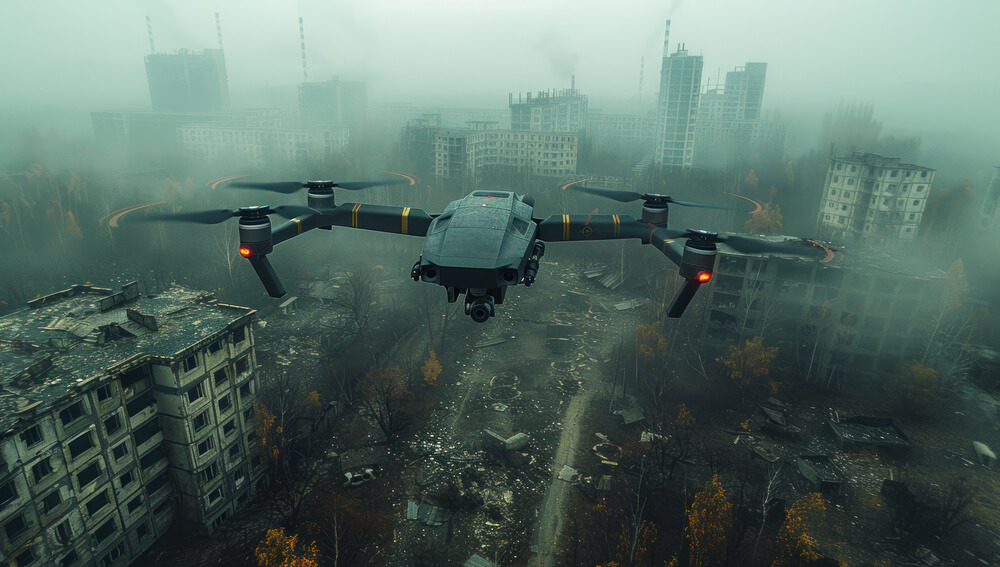Introduction to Radar 4D and its Evolution
Unlike traditional radar systems, which primarily focus on two-dimensional and three-dimensional data, radar 4D technology incorporates the dimension of time, improving its ability to track and analyze fast-moving objects such as drones. This technology evolution has significant implications for modern surveillance operations, where the need for precise and reliable tracking of unmanned aerial vehicles is paramount.
As drones become increasingly dominant in both civilian and military applications, the importance of accurate and efficient drone detection cannot be overstated. Radar 4D systems provide uncomparable spatial resolution and temporal accuracy, enabling operators to distinguish between potential threats and non-threatening objects with greater confidence. This advancement improves security and reduces false alarms, leading to a more effective response to aerial threats.
How Radar 4D Improves Drone Detection
Building on the foundational principles of traditional radar systems, this pioneering technology integrates the crucial element of real-time tracking, offering an unprecedented level of precision and accuracy in drone identification. Unlike its predecessors, radar 4D employs sophisticated temporal analysis, allowing it to capture not just the position of an object in three-dimensional space, but also its movement over time. This approach significantly improves the system’s ability to track fast-moving drones, which often challenge the limitations of conventional advanced technologies for drone detection.
Radar 4D’s real-time tracking allows operators to monitor drone activity instantly, guaranteeing quick responses in military operations and critical infrastructure protection. This advanced technology improves drone detection, accurately distinguishing drones from other airborne objects and reducing false positives for better situational awareness. Radar 4D provides a detailed airspace view, helping operators make quick, informed decisions to improve security against aerial threats.
Applications of Radar 4D in Various Industries
In the defense industry, radar 4D provides military forces with the ability to accurately monitor and track drone movements in real-time, offering a significant advantage in both offensive and defensive operations. The upgraded detection capabilities of radar 4D certify that military personnel can promptly reduce the risk of fire incidents and improving overall situational awareness. This technology enables defense systems to preemptively neutralize potential threats, safeguarding national security interests with unparalleled precision and reliability.
From large-scale events to critical infrastructure sites, radar 4D provides the comprehensive coverage required to detect and respond to drones that could pose a security risk. Within air traffic control, radar 4D is revolutionizing the way airspace is managed, strengthening the ability to track both manned and unmanned aircraft with exceptional accuracy. By continuously adapting to the evolving landscape of drone technology, it remains at the forefront of industry applications, solidifying its role as a vital component in maintaining security across various sectors.
Comparison of Radar 4D with Other Detection Methods
In the context of advanced drone detection, the radar 4D comparison with traditional methods reveals several distinct advantages. Traditional detection systems, such as optical cameras and acoustic sensors, often struggle in varying environmental conditions and can be limited by line-of-sight or noise interference. In contrast, radar 4D excels by incorporating the dimension of time, resulting in real-time, dynamic tracking capabilities that are uncomparable. This technological edge allows operators to not only identify drones more accurately, but also to monitor their trajectories and predict future movements with exceptional precision. Main advantages of radar 4D over traditional methods include:
- Refined Spatial and Temporal Resolution: Radar 4D provides superior spatial resolution and can track the position and velocity of drones over time.
- All-Weather Operation: Radar 4D operates capably in all weather conditions.
- Reduced False Alarms: By distinguishing drones from other airborne objects, radar 4D minimizes false alarms.
- Immediate Response Capability: The real-time data provided by radar 4D enables instant recognition of threats.
Radar 4D overcomes the limitations of traditional methods, setting a new standard in advanced drone detection. As drones become more widespread, its precision and reliability make it essential for evolving aerial surveillance strategies.
Future of Drone Detection with Radar 4D
Future trends in radar 4D promise to introduce even greater precision and adaptability to this already groundbreaking technology. As we look ahead, the potential for integrating artificial intelligence and machine learning with radar 4D systems holds immense promise. By using AI, these systems could analyze flight patterns and behaviors to predict potential threats, enabling preventing responses and heightening security measures.
Advancements in radar 4D could result in smaller, more affordable systems, making advanced drone detection available for a wider range of applications, from small businesses to large urban areas. As connectivity and data exchange improve, radar 4D systems could collaborate in real-time with other surveillance technologies, forming an interconnected network that offers comprehensive aerial security coverage.


Recent Comments